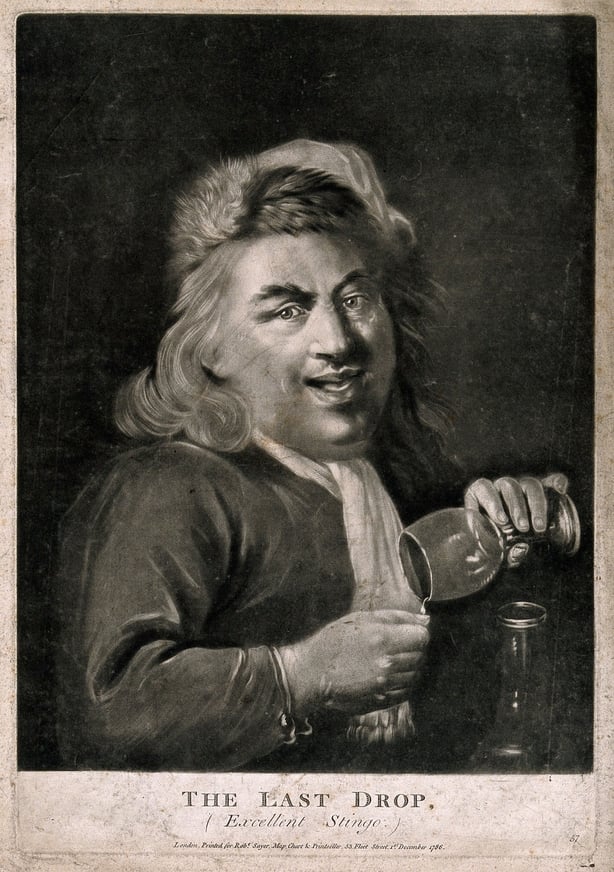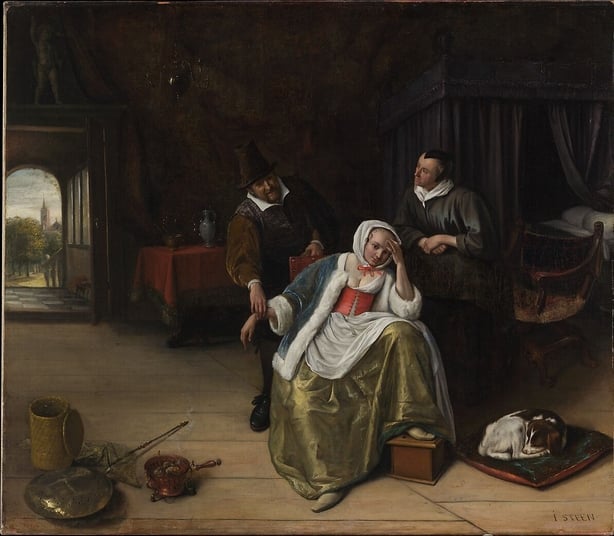Analysis: the general consensus amongst both doctors and patients in Georgian Ireland was that wine had definite therapeutic benefits
In August 1776, Lady Louisa Conolly informed her sister, the duchess of Leinster, that she had received a copy of the Scottish physician William Buchan's popular guide to home medicine, Domestic Medicine, or the Family Physician. Lady Louisa commended the book to the duchess, approvingly noting that it was 'very sensible’.
Many of the ‘sensible’ recipes for medical elixirs that the guide’s readers could whip up at home featured impressive measures of wine. Sometimes the book’s author even recommended neat wine as a treatment for specific maladies.
Curative powers have been attributed to wine since ancient times. The Ebers Papyrus is an ancient Egyptian medical papyrus that contains many prescriptions featuring wine, and the fifth-century BCE treatise Nature of Man—part of the Hippocratic Corpus—attributes specific therapeutic properties to specific wines, although it cautions against the use of liberal quantities of undiluted wine. Pliny the Elder recognised that using wine to treat illness was a complex issue, reasoning that it was difficult to determine whether wine-as-medicine did more harm than good to a person.

In Georgian Ireland, the apparently general consensus amongst both doctors and patients was that wine had definite therapeutic benefits. Jonathan Swift, who was prone to a range of unpleasant physical symptoms—a number of which have now been attributed to his probably suffering from Meniere's disease—was not unique in believing that wine helped to relieve them. Swift generally relied on his favourite ‘Irish wine’—as he sometimes playfully called claret, the red wine of Bordeaux—to keep his disorders at bay.
Buchan and other Georgian-era physicians frequently specified the use of claret—sometimes blended with various other substances accorded curative effects—as the best wine to use when treating certain maladies. The fact that wine merchants in the period advertised ‘wine for invalids’ underscores the popularity of its use as a tonic and treatment.
An advertisement in the Freeman’s Journal in April 1821, touts the luxury claret, Château Margaux ‘In Pint Flasks […] bottled chiefly for the accommodation of Invalids’. Physicians who ‘prescribed’ wine often recommended doses of half-pint or pint measures. Individual patients and their carers, on the other hand, didn’t necessarily place similar limits on the measures of wine they used medicinally.

In 1783 an Armagh gentleman, Robert Jackson, railed against an unwell friend’s doctor who had advised his patient to drink only water. Jackson, apparently convinced that water was not a sufficiently fortifying drink for men of advanced years, implored his friend to dismiss the ‘foolish’ medic’s advice and to drink at least ‘a Bottle of good claret’ after his dinner.
In July 1751, when a valued servant fell ill in Bishop Edward Synge’s household, the bishop instructed his daughter, who was overseeing the domestic’s care, to ‘give him Claret as long and as much as the Doctor pleases’.
The disorder which laid Synge’s servant low is not specified, but it may have been a fever. In the treatment of ‘nervous fever’, Buchan’s guide’s suggested remedy was ‘a bottle or two of strong wine a day’—preferably ‘Good old sound claret’ (mixing the wine with gruel or whey was optional).

Though such a therapy may have appealed to a patient, it was unlikely to have succeeded in raising them quickly from a sick bed. The same guide extolled claret’s therapeutic value in treating a wide range of disorders, including ‘the last stages of gonorrhoea’; however, one trusts that this condition was unlikely to have affected the servant of a bishop—or a bishop.
There were cases in which wise doctors advised their patients to abstain from wine. After the duchess of Leinster’s daughter, Charlotte, fell from a horse in October 1778 and appeared to suffer a concussion, her physician told her to exclude wine from her diet. Sir Edward Barry, the famous Cork-born physician, reckoned that abstaining from wine when he had a fever was a key factor in relieving it.
However, Barry believed that the moderate consumption of wine had a beneficial effect on an individual’s spirits. He was pleased with the radical improvement in the health of a dropsical patient to whom he had recommended a daily pint of ‘the best French claret’.
Despite fears relating to wine and gout, it continued to be valued for its perceived curative and restorative powers in the Georgian era
Richard Lovell Edgeworth expressed his belief that wine was responsible for the prevalence of gout amongst gentleman in Ireland in a letter written to his friend the physician Erasmus Darwin in October 1786. Edgeworth based this assertion on his observation of the habits of Ireland’s middle and lower classes. He claimed that whisky and whiskey-punch drinking was rampant amongst these social groups, yet they appeared not to suffer from that scourge of gentlemen—gout.
Despite some fears relating to wine consumption and gout, wine continued to be valued for its perceived curative and restorative powers in the Georgian era. For those who could afford it, it was regarded as a desirable component in the domestic-medicine arsenal.
But our Georgian forebears’ faith in the ‘medicinal’ value of wine is discredited by modern medical science. Recognising the many health risks associated with the consumption of alcohol, modern health organisations and health professionals recommend zero to low consumption levels of wine and other alcoholic drinks.
Dr Tara McConnell is the author of "Honest Claret": The Social Meaning of Georgian Ireland's Favourite WIne (Peter Lang).
The views expressed here are those of the author and do not represent or reflect the views of RTÉ






